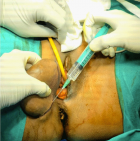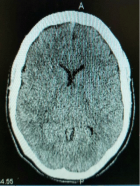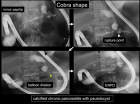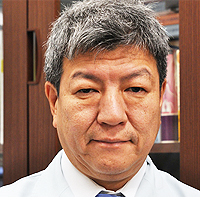Abstract
Research Article
Survival of Free and Encapsulated Probiotics in Healthy Gummy Candy as a Carrier for Probiotic Capsules
Raghda Abdulhussain Kareem, Seyed Hadi Razavi* and Zeinab Mousavi
Published: 01 October, 2024 | Volume 8 - Issue 1 | Pages: 029.037
Probiotic gummy candy is an innovative food that can be used as a carrier to deliver probiotics. This study aimed to manufacture healthy gummy candy (HGC) as a carrier for probiotic capsules. The ingredients' effect on the viability of probiotic capsules and free cells was evaluated for 48 days under refrigerated conditions. Also, the textural properties, overall acceptability of products, and physicochemical properties were tested. The encapsulation probiotics in sodium alginate and chitosan provided a high efficiency of 88.16%. At the same time, the encapsulated cells-based HGC (HGC-C) had higher counts of probiotics than free cells-based HGC, and it remained above the 3 log CFU/g at the end of the 48-day storage period in HGC-C, while the free cells reached zero at 30 days. The HGC product showed a low hardness value and high antioxidant capacity as well as, and the colour coordinates for the product showed more yellow, with an intense red colour. Using mango pulp and probiotics in gummy candies is an innovative and viable alternative to the confectionery industry; therefore, combining fruits as a source of prebiotics and probiotic bacteria could be a promising formula for probiotics gummy supplement preparation.
Read Full Article HTML DOI: 10.29328/journal.afns.1001059 Cite this Article Read Full Article PDF
Keywords:
Probiotics; Antioxidant activity; Gummies; Capsule; Polyphenols
References
- Albuquerque BR, Oliveira MBP, Barros L, Ferreira IC. Could fruits be a reliable source of food colorants? Pros and cons of these natural additives. Crit Rev Food Sci Nutr. 2021;61(5):805-835. Available from: https://doi.org/10.1080/10408398.2020.1746904
- Lele V, Ruzauskas M, Zavistanaviciute P, Laurusiene R, Rimene G, Kiudulaite D, et al. Development and characterization of gummy–supplements enriched with probiotics and prebiotics. CyTA J Food. 2018;16(1):580-587. Available from: https://doi.org/10.1080/19476337.2018.1433721
- Lerner A, Shoenfeld Y, Matthias T. Probiotics: if it does not help it does not do any harm. Really? Microorganisms. 2019;7(4):104. Available from: https://doi.org/10.3390/microorganisms7040104
- Minj J, Chandra P, Paul C, Sharma RK. Bio-functional properties of probiotic Lactobacillus: current applications and research perspectives. Crit Rev Food Sci Nutr. 2021;61(13):2207-2224. Available from: https://doi.org/10.1080/10408398.2020.1774496
- Nikmaram P, Mousavi SM, Emam-Djomeh Z, Kiani H, Razavi SH. Evaluation and prediction of metabolite production, antioxidant activities, and survival of Lactobacillus casei 431 in a pomegranate juice supplemented yogurt drink using support vector regression. Food Sci Biotechnol. 2015;24:2105-2112. Available from: https://link.springer.com/article/10.1007/s10068-015-0279-5
- Ivanovska TP, Jurhar Pavlova M, Mladenovska K, Petrushevska Tozi L. Probiotics, prebiotics, synbiotics in prevention and treatment of inflammatory bowel diseases. Macedonian Pharm Bull. 2014;60(3):3-19. Available from: https://bulletin.mfd.org.mk/volumes/Volume%2060_2/60_2_001.pdf
- Kareem RA, Razavi SH. Plantaricin bacteriocins: as safe alternative antimicrobial peptides in food preservation—a review. J Food Saf. 2020;40(1). Available from: https://doi.org/10.1111/jfs.12735
- Sun Q, Yin S, He Y, Cao Y, Jiang C. Biomaterials and encapsulation techniques for probiotics: current status and future prospects in biomedical applications. Nanomaterials. 2023;13(15):2185. Available from: https://doi.org/10.3390/nano13152185
- Agriopoulou S, Tarapoulouzi M, Varzakas T, Jafari SM. Application of encapsulation strategies for probiotics: from individual loading to co-encapsulation. Microorganisms. 2023;11(12):2896. Available from: https://doi.org/10.3390/microorganisms11122896
- Bigdelian E, Razavi SH. Evaluation of survival rate and physicochemical properties of encapsulated bacteria in alginate and resistant starch in mayonnaise sauce. J Bioprocessing Biotech. 2014;4(5):1. Available from: http://dx.doi.org/10.4172/2155-9821.1000166
- Sessler T, Weiss J, Vodovotz Y. Influence of pH and soy protein isolate addition on the physicochemical properties of functional grape pectin confections. Food Hydrocolloids. 2013;32(2):294-302. Available from: https://doi.org/10.1016/j.foodhyd.2013.01.013
- Bartkiene E, Ruzauskas M, Lele V, Zavistanaviciute P, Bernatoniene J, Jakstas V, et al. Development of antimicrobial gummy candies with addition of bovine colostrum, essential oils and probiotics. Int J Food Sci Technol. 2018;53(5):1227-1235. Available from: https://doi.org/10.1111/ijfs.13701
- Mutlu C, Tontul SA, Erbaş M. Production of a minimally processed jelly candy for children using honey instead of sugar. LWT. 2018;93:499-505. Available from: https://doi.org/10.1016/j.lwt.2018.03.064
- Cano-Lamadrid M, Nowicka P, Hernández F, Carbonell-Barrachina AA, Wojdyło A. Phytochemical composition of smoothies combining pomegranate juice (Punica granatum L.) and Mediterranean minor crop purées (Ficus carica, Cydonia oblonga, and Ziziphus jujube). J Sci Food Agric. 2018;98(15):5731-5741. Available from: https://doi.org/10.1002/jsfa.9120
- De Moura SCSR, Berling CL, Garcia AO, Queiroz MB, Alvim ID, Hubinger MD. Release of anthocyanins from the hibiscus extract encapsulated by ionic gelation and application of microparticles in jelly candy. Food Res Int. 2019;121:542-552. Available from: https://doi.org/10.1016/j.foodres.2018.12.010
- Pauliuc D, Dranca F, Ropciuc S, Oroian M. Advanced characterization of monofloral honeys from Romania. Agriculture. 2022;12(4):526. Available from: https://doi.org/10.3390/agriculture12040526
- Bello-Pérez LA, García-Suárez FJ, Agama-Acevedo E. Mango carbohydrates. Food. 2007;1(1):36-40.
- Rahmiati N, Sari R, Wahyuni TS. Phytochemical and antioxidant activity evaluation of lime (Citrus aurantifolia) juice powder. Galenika J Pharm. 2023;9(2):197-207. Available from: http://dx.doi.org/10.22487/j24428744.2023.v9.i2.16347
- Kazeem MI, Bankole HA, Oladokun TI, Bello AO, Maliki MA. Citrus aurantifolia (Christm.) Swingle (lime) fruit extract inhibits the activities of polyol pathway enzymes. EFood. 2020;1(4):310-315. Available from: https://www.atlantis-press.com/journals/efood/125943793
- Gul O, Dervisoglu M. Application of multicriteria decision technique to determine optimum sodium alginate concentration for microencapsulation of Lactobacillus casei Shirota by extrusion and emulsification. Journal of Food Process Engineering. 2017;40(3):e12481. Available from: https://doi.org/10.1111/jfpe.12481
- Kamalian N, Mirhosseini H, Mustafa S, Abd Manap MY. Effect of alginate and chitosan on viability and release behavior of Bifidobacterium pseudocatenulatum G4 in simulated gastrointestinal fluid. Carbohydr Polym. 2014;111:700-706. Available from: https://doi.org/10.1016/j.carbpol.2014.05.014
- Li W, Chen W, Wang Z, Chen W, Zhang M, Zhong Q, et al. Preparation and characterization of beads of sodium alginate/carboxymethyl chitosan/cellulose nanofiber containing porous starch embedded with gallic acid: an in vitro simulation delivery study. Foods. 2022;11(10):1394. Available from: https://doi.org/10.3390/foods11101394
- Zeashan M, Afzaal M, Saeed F, Ahmed A, Tufail T, Ahmed A, et al. Survival and behavior of free and encapsulated probiotic bacteria under simulated human gastrointestinal and technological conditions. Food Sci Nutr. 2020;8(5):2419-2426. Available from: https://doi.org/10.1002/fsn3.1531
- De Araújo Etchepare M, Nunes GL, Nicoloso BR, Barin JS, Flores EMM, de Oliveira Mello R, et al. Improvement of the viability of encapsulated probiotics using whey proteins. LWT. 2020;117:108601. Available from: http://dx.doi.org/10.1016/j.lwt.2019.108601
- Kamil RZ, Fadhila FH, Rachmasari AD, Murdiati A, Juffrie M, Rahayu ES. Development of probiotic gummy candy using the indigenous Lactobacillus plantarum Dad-13 strain: evaluation of its gastrointestinal resistance and shelf-life prediction. Food Res. 2021;5(5):265-273. Available from: http://dx.doi.org/10.26656/fr.2017.5(5).731
- Association of Official Agricultural Chemists. Official methods of analysis of AOAC International. 18th ed. Arlington, USA; 2005.
- Ben Rejeb I, Dhen N, Kassebi S, Gargouri M. Quality evaluation and functional properties of reduced sugar jellies formulated from citrus fruits. J Chem. 2020;2020:1-8. Available from: https://doi.org/10.1155/2020/5476872
- Mahmood T, Bagga P, Siddiqui MH, Fareed S. Determination of total phenol & flavonoid content in seeds of Psoraleacorylifolia. Nat Prod Indian J. 2011;7(4):171-173. Available from: https://www.tsijournals.com/articles/determination-of-total-phenol--flavonoid-content-in-seeds-of-psoralea-corylifolia.pdf
- Bhatt BD, Parajuli GC. Study on total phenolic content (TPC), total flavonoid content (TFC), and antioxidant activities of Urtica dioica of Nepalese origin. J Nepal Chem Soc. 2017;37:113-118. Available from: https://doi.org/10.3126/jncs.v37i0.32169
- Mansouri FE, Farissi HE, Cacciola F, Esteves da Silva JC, Lovillo MP, Majdoub YOE, et al. Profiling the volatile and non-volatile compounds along with the antioxidant properties of malted barley. Separations. 2022;9(5):119. Available from: https://doi.org/10.3390/separations9050119
- Herrero AM, Ordóñez JA, de Avila R, Herranz B, De la Hoz L, Cambero MI. Breaking strength of dry fermented sausages and their correlation with texture profile analysis (TPA) and physico-chemical characteristics. Meat Sci. 2007;77(3):331-338. Available from: https://doi.org/10.1016/j.meatsci.2007.03.022
- Dag D, Kilercioglu M, Oztop MH. Physical and chemical characteristics of encapsulated goldenberry (Physalis peruviana L.) juice powder. LWT-Food Sci Technol. 2017;83:86-94. Available from: http://dx.doi.org/10.1016/j.lwt.2017.05.007
- Talebzadeh S, Sharifan A. Developing probiotic jelly desserts with Lactobacillus acidophilus. J Food Process Preserv. 2017;41(1). Available from: https://doi.org/10.1111/jfpp.13026
- Mawad A, Helmy YA, Shalkami AG, Kathayat D, Rajashekara G. coli Nissle microencapsulation in alginate-chitosan nanoparticles and its effect on Campylobacter jejuni in vitro. Appl Microbiol Biotechnol. 2018;102:10675-10690. Available from: https://doi.org/10.1007/s00253-018-9417-3
- Afzaal M, Saeed F, Ateeq H, Shah YA, Hussain M, Javed A, et al. Effect of cellulose–chitosan hybrid-based encapsulation on the viability and stability of probiotics under simulated gastric transit and in kefir. Biomimetics. 2022;7(3):109-121. Available from: https://doi.org/10.3390/biomimetics7030109
- Niam MLQ, Amin RS, Utami N, Wahyuni AS. Formulation of dietary supplement chewable gummy with bastard cedar leaves (Guazuma ulmifolia), senna leaves (Cassia angustifolia) and lime extracts using a simplex lattice design. In: Proceedings of the International Conference on Sustainable Innovation on Health Sciences and Nursing ICOSI-HSN. 2022;122-135. Available from: https://doi.org/10.2991/978-94-6463-070-1_17
- Tarahi M, Mohamadzade Fakhr-davood M, Ghaedrahmati S, Roshanak S, Shahidi F. Physicochemical and sensory properties of vegan gummy candies enriched with high-fiber jaban watermelon exocarp powder. Foods. 2023;12(7):1478. Available from: https://doi.org/10.3390/foods12071478
- Bexiga F, Rodrigues D, Guerra R, Brázio A, Balegas T, Cavaco AM, et al. A TSS classification study of ‘Rocha’ pear (Pyrus communis L.) based on non-invasive visible/near infra-red reflectance spectra. Postharvest Biol Technol. 2017;132:23-30. Available from: http://dx.doi.org/10.1016/j.postharvbio.2017.05.014
- Ge H, Wu Y, Woshnak LL, Mitmesser SH. Effects of hydrocolloids, acids and nutrients on gelatin network in gummies. Food Hydrocoll. 2021;113:106549. Available from: http://dx.doi.org/10.1016/j.foodhyd.2020.106549
- Hartel RW, von Elbe JH, Hofberger R. Jellies, gummies, and licorices. In: Hartel RW, von Elbe JH, Hofber R, editors. Confectionery Science and Technology. Cham, Switzerland: Springer International Publishing AG; 2018. Available from: https://link.springer.com/book/10.1007/978-3-319-61742-8
- Sadler GD, Murphy PA. pH and titratable acidity. In: Food Analysis. Boston: Springer; 2010. p. 219-238. Available from: https://link.springer.com/book/10.1007/978-1-4419-1478-1#page=219
- Chalak L, Younes J, Rouphael S, Hamadeh B. Morphological characterization of prickly pears (Opuntia ficus indica (L.) Mill.) cultivated in Lebanon. Int J Sci Res. 2014;3(6):2319-7064. Available from: https://www.ijsr.net/archive/v3i6/MjQwNjE0MDU=.pdf
- Abu-shama HS, Ahmed FA, Abd El-magied HED. Assessment of jelly candy manufactured from prickly pear fruits (Opuntia spp.). World J Adv Res Rev. 2022;16(1):767-783.
- Efe N. Characterization and formulation of gelatin-based soft candies. MSc thesis, Middle East Technical University; 2018. p. 125. Available from: https://hdl.handle.net/11511/27416
- Ergun R, Lietha R, Hartel RW. Moisture and shelf life in sugar confections. Crit Rev Food Sci Nutr. 2010;50(2):162-192. Available from: https://doi.org/10.1080/10408390802248833
- Tas O, Ertugrul U, Grunin L, Oztop MH. Investigation of the hydration behavior of different sugars by time domain-NMR. Foods. 2022;11(8):1148. Available from: https://doi.org/10.3390/foods11081148
- Liu D, Nikoo M, Boran G, Zhou P, Regenstein JM. Collagen and gelatin. Annu Rev Food Sci Technol. 2015;6:527-557. Available from: https://doi.org/10.1146/annurev-food-031414-111800
- Burey P, Bhandari BR, Rutgers RPG, Halley PJ, Torley PJ. Confectionery gels: A review on formulation, rheological and structural aspects. Int J Food Prop. 2009;12(1):176-210. Available from: https://doi.org/10.1080/10942910802223404
- Vincente AR, Manganaris GA, Ortiz CM, Sozzi GO, Crisosto CH. Nutritional quality of fruits and vegetables. In: Florkowski J, Shewfelt RL, Stanly E, editors. Postharvest Handling. Academic Press; 2014;69-169.
- Teixeira-Lemos E, Almeida AR, Vouga B, Morais C, Correia I, Pereira P, et al. Development and characterization of healthy gummy jellies containing natural fruits. Open Agric. 2021;6(1):466-478. Available from: http://dx.doi.org/10.1515/opag-2021-0029
- Haggag EG, Kamal AM, Abdelhady MI, El-Sayed MM, El-Wakil EA, Abd-El-hamed SS. Antioxidant and cytotoxic activity of polyphenolic compounds isolated from the leaves of Leucenia leucocephala. Pharm Biol. 2011;49(11):1103-1113. Available from: https://doi.org/10.3109/13880209.2011.568623
- Ruenroengklin N, Zhong J, Duan X, Yang B, Li J, Jiang Y. Effects of various temperatures and pH values on the extraction yield of phenolics from litchi fruit pericarp tissue and the antioxidant activity of the extracted anthocyanins. Int J Mol Sci. 2008;9(7):1333-1341. Available from: https://doi.org/10.3390%2Fijms9071333
- Ozcelik B, Lee JH, Min DB. Effects of light, oxygen, and pH on the absorbance of 2,2-diphenyl-1-picrylhydrazyl. J Food Sci. 2003;68(2):487-490. Available from: https://doi.org/10.1111/j.1365-2621.2003.tb05699.x
- Ashari H, Sadeghi N, Oveisi MR, Hajimahmoudi M. Total phenol, total flavonoid and ascorbic acid content of Iranian commercial orange juice. J Food Saf Hyg. 2020;6(1):22-27. Available from: https://doi.org/10.18502/jfsh.v6i1.6022
- Murakami M, Yamaguchi T, Takamura H, Atoba TM. Effects of thermal treatment on radical-scavenging activity of single and mixed polyphenolic compounds. J Food Sci. 2004;69(1):7-10. Available from: http://dx.doi.org/10.1111/j.1365-2621.2004.tb17848.x
- Buchner N, Krumbein A, Rohn S, Kroh LW. Effect of thermal processing on the flavonols rutin and quercetin. Rapid Commun Mass Spectrom. 2006;20(21):3229-3235. Available from: https://doi.org/10.1002/rcm.2720
- Madalageri D, Bharati PC, Orsat V, Raghavan V, Kage U. Antioxidant activity in pulp and peel of three mango varieties. J Horticult Sci. 2015;10(2):199-209. Available from: https://doi.org/10.24154/jhs.v10i2.130
- Gyergyák K, Boros B, Marton K, Felinger A, Papp N, Farkas Á. Bioactive constituents and antioxidant activity of some Carpathian basin honeys. Nat Prod Commun. 2016;11(2):245-250. Available from: https://doi.org/10.1177/1934578X1601100228
- Ali Abadi MHS, Karami-Osboo R, Kobarfard F, Jahani R, Nabi M, Yazdanpanah H, et al. Detection of lime juice adulteration by simultaneous determination of main organic acids using liquid chromatography-tandem mass spectrometry. J Food Compos Anal. 2022;105:104223. Available from: https://doi.org/10.1016/j.jfca.2021.104223
- Talebzadeh S, Sharifan A, Tarzi BG, Panah HE. Assessment of the possibility of probiotic jelly production using microencapsulation technique of Lactobacillus acidophilus bacteria. Int J Biosci. 2014;5(1):143-154. Available from: https://www.cabidigitallibrary.org/doi/full/10.5555/20143287118
- Sheehan VM, Ross P, Fitzgerald GF. Assessing the acid tolerance and the technological robustness of probiotic cultures for fortification in fruit juices. Innov Food Sci Emerg Technol. 2007;8(2):279-284. Available from: https://doi.org/10.1016/j.ifset.2007.01.007
- Chaudhary A. Probiotic fruit and vegetable juices: Approach towards a healthy gut. Int J Curr Microbiol App Sci. 2019;8(6):1265-1279. Available from: https://doi.org/10.20546/ijcmas.2019.806.154
- Boza-Méndez E, López-Calvo R, Cortés-Muñoz M. Innovative dairy products development using probiotics: challenges and limitations. Tech Costa Rica. 2012;10:213-236. Available from: http://dx.doi.org/10.5772/50104
- Cai L, Feng J, Regenstein J, Lv Y, Li J. Confectionery gels: Effects of low calorie sweeteners on the rheological properties and microstructure of fish gelatin. Food Hydrocoll. 2017;67:157-165. Available from: https://doi.org/10.1016/j.foodhyd.2016.12.031
- Guiné RP, Correia PM, Reis C, Florença SG. Evaluation of texture in jelly gums incorporating berries and aromatic plants. Open Agric. 2020;5(1):450-461. Available from: http://dx.doi.org/10.1515/opag-2020-0043
- Nguyen HTL, Katopo L, Pang E, Mantri N, Kasapis S. Structural variation in gelatin networks from low to high-solid systems affected by honey addition. Food Res Int. 2019;121:319-325. Available from: https://doi.org/10.1016/j.foodres.2019.03.048
- Belay A, Haki GD, Birringer M, Borck H, Addi A, Baye K, et al. Rheology and botanical origin of Ethiopian monofloral honey. LWT. 2017;75:393-401. Available from: http://dx.doi.org/10.1016/j.lwt.2016.09.021
- Kulmyrzaev A, McClements DJ. High frequency dynamic shear rheology of honey. J Food Eng. 2000;45(4):219-224. Available from: http://dx.doi.org/10.1016/S0260-8774(00)00062-5
- Hamedi F, Mohebbi M, Shahidi F, Azarpazhooh E. Ultrasound-assisted osmotic treatment of model food impregnated with pomegranate peel phenolic compounds: Mass transfer, texture, and phenolic evaluations. Food Bioprocess Technol. 2018;11:1061-1074. Available from: https://link.springer.com/article/10.1007/s11947-018-2071-z
- Tireki S, Sumnu G, Sahin S. Correlation between physical and sensorial properties of gummy confections with different formulations during storage. J Food Sci Technol. 2021;58:1-12. Available from: https://doi.org/10.1007/s13197-020-04923-3
- Moghaddas Kia E, Ghaderzadeh SL, Mojaddar Langroodi A, Ghasempour Z, Ehsani A. Red beet extract usage in gelatin/gellan based gummy candy formulation introducing Salix aegyptiaca distillate as a flavoring agent. J Food Sci Technol. 2020;57:3355-3362. Available from: https://doi.org/10.1007/s13197-020-04368-8
- Rumainum IM, Worarad K, Srilaong V, Yamane K. Fruit quality and antioxidant capacity of six Thai mango cultivars. Agric Nat Resour. 2018;52(2):208-214. Available from: https://doi.org/10.1016/j.anres.2018.06.007
- Dey S, Nagababu BH. Applications of food color and bio-preservatives in food and their effect on human health. Food Chem Adv. 2022;1:100019. Available from: https://doi.org/10.1016/j.focha.2022.100019
Figures:
Similar Articles
-
Improvements in the Subjective Sleep of Japanese Middle-aged Managers from the Consumption of an Edible Film Containing CrocetinYusuke Osuka, Hirofumi Masutomi*, Shuji Nakamura, Chiemi Tanigawa, Katsuyuki Ishihara, Masashi Yanagisawa, Toshio Kokubo. Improvements in the Subjective Sleep of Japanese Middle-aged Managers from the Consumption of an Edible Film Containing Crocetin. . 2023 doi: 10.29328/journal.afns.1001054; 7: 088-096
-
Survival of Free and Encapsulated Probiotics in Healthy Gummy Candy as a Carrier for Probiotic CapsulesRaghda Abdulhussain Kareem, Seyed Hadi Razavi*, Zeinab Mousavi. Survival of Free and Encapsulated Probiotics in Healthy Gummy Candy as a Carrier for Probiotic Capsules. . 2024 doi: 10.29328/journal.afns.1001059; 8: 029.037
Recently Viewed
-
Prediction of neonatal and maternal index based on development and population indicators: a global ecological studySedigheh Abdollahpour,Hamid Heidarian Miri,Talat Khadivzadeh*. Prediction of neonatal and maternal index based on development and population indicators: a global ecological study. Clin J Obstet Gynecol. 2021: doi: 10.29328/journal.cjog.1001096; 4: 101-105
-
A Genetic study in assisted reproduction and the risk of congenital anomaliesKaparelioti Chrysoula,Koniari Eleni*,Efthymiou Vasiliki,Loutradis Dimitrios,Chrousos George,Fryssira Eleni. A Genetic study in assisted reproduction and the risk of congenital anomalies. Clin J Obstet Gynecol. 2021: doi: 10.29328/journal.cjog.1001095; 4: 096-100
-
Leiomyosarcoma in pregnancy: Incidental finding during routine caesarean sectionToon Wen Tang*,Phoon Wai Leng Jessie. Leiomyosarcoma in pregnancy: Incidental finding during routine caesarean section. Clin J Obstet Gynecol. 2021: doi: 10.29328/journal.cjog.1001094; 4: 092-095
-
Adult Neurogenesis: A Review of Current Perspectives and Implications for Neuroscience ResearchAlex, Gideon S*,Olanrewaju Oluwaseun Oke,Joy Wilberforce Ekokojde,Tolulope Judah Gbayisomore,Martina C. Anene-Ogbe,Farounbi Glory,Joshua Ayodele Yusuf. Adult Neurogenesis: A Review of Current Perspectives and Implications for Neuroscience Research. J Neurosci Neurol Disord. 2024: doi: 10.29328/journal.jnnd.1001102; 8: 106-114
-
Late discover of a traumatic cardiac injury: Case reportBenlafqih C,Bouhdadi H*,Bakkali A,Rhissassi J,Sayah R,Laaroussi M. Late discover of a traumatic cardiac injury: Case report. J Cardiol Cardiovasc Med. 2019: doi: 10.29328/journal.jccm.1001048; 4: 100-102
Most Viewed
-
Evaluation of Biostimulants Based on Recovered Protein Hydrolysates from Animal By-products as Plant Growth EnhancersH Pérez-Aguilar*, M Lacruz-Asaro, F Arán-Ais. Evaluation of Biostimulants Based on Recovered Protein Hydrolysates from Animal By-products as Plant Growth Enhancers. J Plant Sci Phytopathol. 2023 doi: 10.29328/journal.jpsp.1001104; 7: 042-047
-
Sinonasal Myxoma Extending into the Orbit in a 4-Year Old: A Case PresentationJulian A Purrinos*, Ramzi Younis. Sinonasal Myxoma Extending into the Orbit in a 4-Year Old: A Case Presentation. Arch Case Rep. 2024 doi: 10.29328/journal.acr.1001099; 8: 075-077
-
Feasibility study of magnetic sensing for detecting single-neuron action potentialsDenis Tonini,Kai Wu,Renata Saha,Jian-Ping Wang*. Feasibility study of magnetic sensing for detecting single-neuron action potentials. Ann Biomed Sci Eng. 2022 doi: 10.29328/journal.abse.1001018; 6: 019-029
-
Pediatric Dysgerminoma: Unveiling a Rare Ovarian TumorFaten Limaiem*, Khalil Saffar, Ahmed Halouani. Pediatric Dysgerminoma: Unveiling a Rare Ovarian Tumor. Arch Case Rep. 2024 doi: 10.29328/journal.acr.1001087; 8: 010-013
-
Physical activity can change the physiological and psychological circumstances during COVID-19 pandemic: A narrative reviewKhashayar Maroufi*. Physical activity can change the physiological and psychological circumstances during COVID-19 pandemic: A narrative review. J Sports Med Ther. 2021 doi: 10.29328/journal.jsmt.1001051; 6: 001-007

HSPI: We're glad you're here. Please click "create a new Query" if you are a new visitor to our website and need further information from us.
If you are already a member of our network and need to keep track of any developments regarding a question you have already submitted, click "take me to my Query."

















































































































































